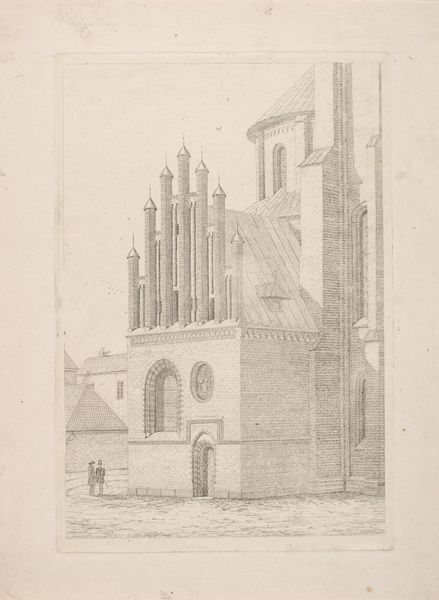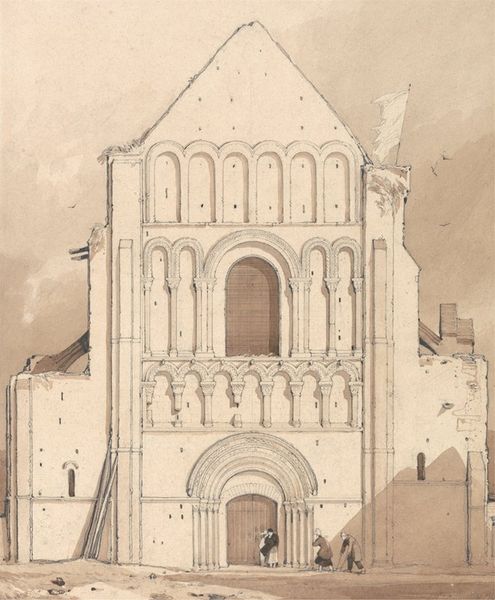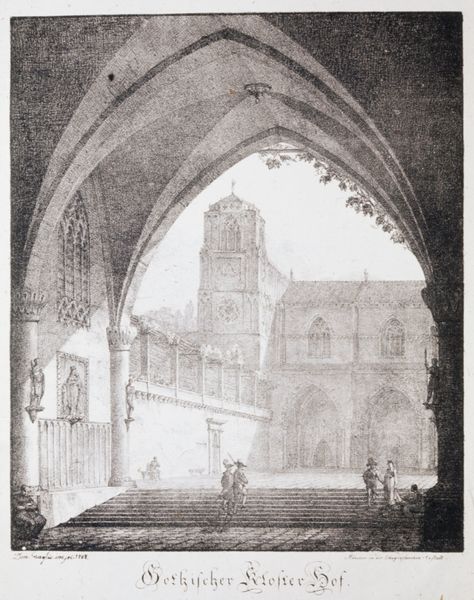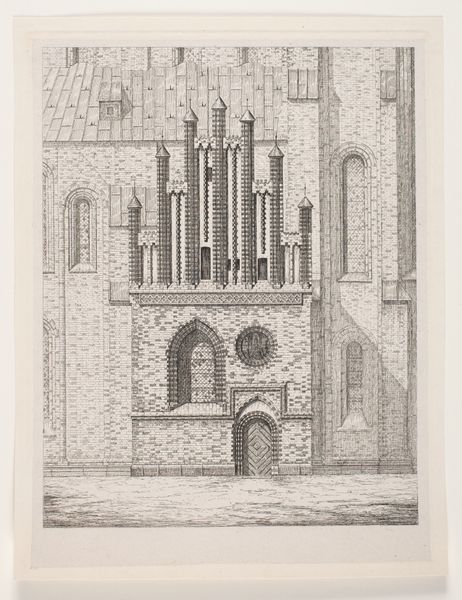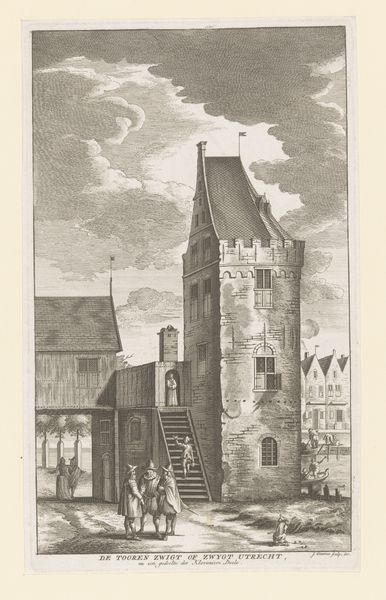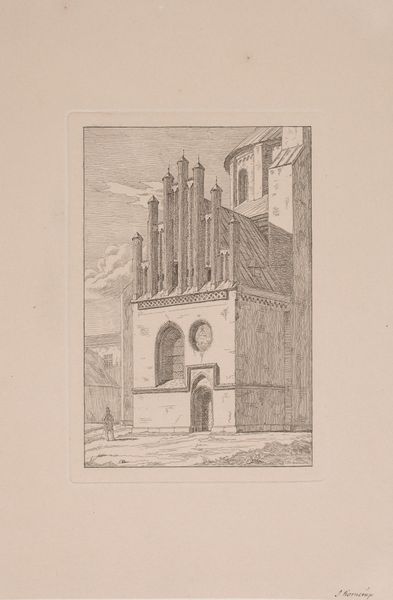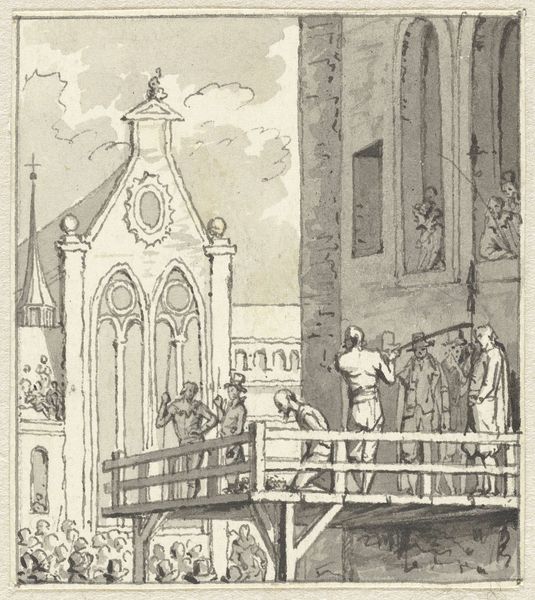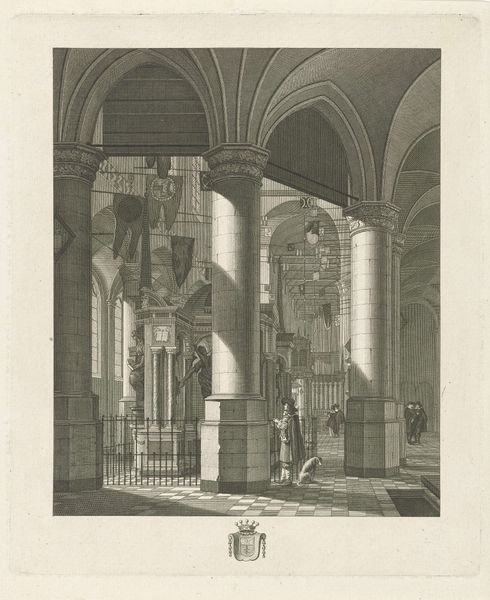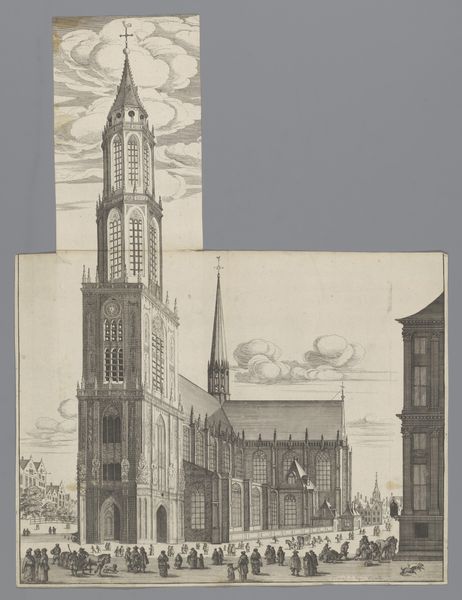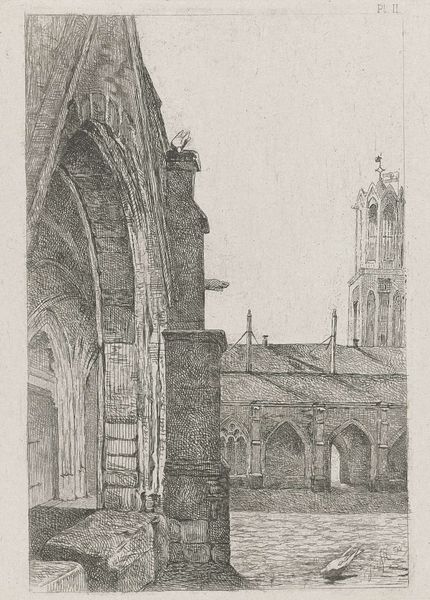
Dimensions: 145 mm (height) x 100 mm (width) (bladmaal)
Curator: This etching from 1851 by Jacob Kornerup presents a view of Roskilde Cathedral in Denmark. Editor: My initial impression is of delicate intricacy, a gothic-revival yearning made permanent through laborious lines. Curator: The cathedral has long served as a symbol of Danish royalty, indeed as a key nexus of power. Examining this artwork from the vantage point of that history shows the way monuments like this, particularly via the printing press, became powerful tools for establishing national identity in the 19th century. Editor: Yes, and to produce this print would have demanded tremendous skill, a slow, methodical layering of lines to capture not just the likeness of the stone, but also its texture, its weathering. Etching isn’t just about the image; it’s about the artist's direct, physical engagement with materials, translating architecture to paper via craft. It looks like metal lines transferred into architecture’s very form! Curator: It certainly highlights a romantic era fascination with the grand scale of religious institutions and, crucially, the power they exerted over generations. Look how Kornerup emphasizes verticality! It inspires awe. The play of light and shadow lends an ethereal quality too, as if the cathedral transcends the earthly realm. Editor: I find it interesting how the man at the foot of the cathedral in the lower left stands so passively. His figure emphasizes the building’s monumental, impressive physical scale, but that is enabled by the artist’s intensive manual process; they both in different ways amplify a political project through the visual impact on its 19th-century viewers. Curator: Absolutely, and the wide distribution enabled by printmaking amplified the cathedral's political significance throughout the population. Think of prints circulating as affordable art that reinforces such notions. Editor: Indeed, that circulation speaks volumes! Seeing how architecture and material labor intertwine offers fresh perspective here. Curator: I agree; studying its visual impact alongside the context allows the picture’s complex and broad impact to appear. Editor: Right, understanding labor, circulation and technique helps connect architecture and identity!
Comments
No comments
Be the first to comment and join the conversation on the ultimate creative platform.
